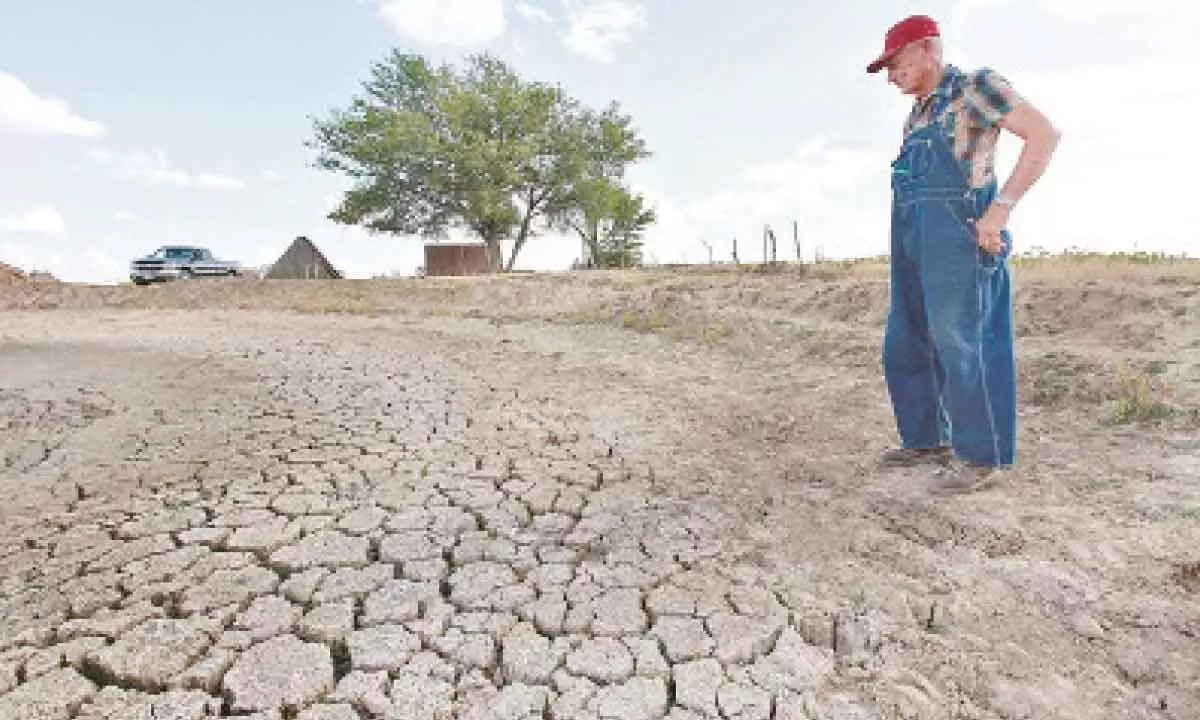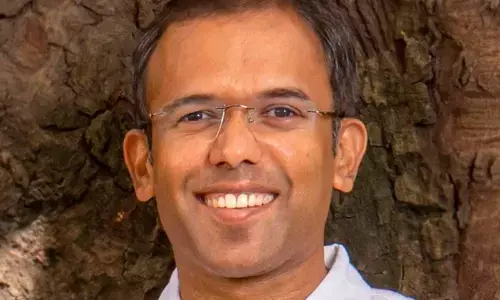Flash droughts to be the new normal?

Flash droughts, caused by low precipitation and high evapotranspiration and leading to quick depletion of soil of water, can develop into severe droughts within a few weeks. While they start quickly, the droughts can last for months, damaging vegetation and ecosystems, and triggering heat waves and wildfires. At present, we lack the monitoring and predictive capabilities to warn of flash drought development
Climate change is making droughts faster and more furious, especially a specific fast-developing heat-driven kind that catch farmers by surprise, a new study found. The study in journal Science found droughts in general are being triggered faster. But it also showed that a special and particularly nasty sudden kind — called "flash droughts" by experts — is casting an ever bigger crop-killing footprint. It comes only in the growing season – mostly summer, but also spring and fall – and is insidious because it's caused not just by the lack of rain or snow that's behind a typical slow-onset drought, hydrologists and meteorologists said. What happens is the air gets so hot and so dry that it sucks water right out of plants and soil. Most of China's Yangtze River basin last summer was struck by a flash drought that developed within only a month due to high temperatures, reports AP.
'Flash droughts', or droughts that start and develop rapidly, have become more frequent due to human-caused climate change and the trend is predicted to accelerate in a warmer future, according to a new research. An international team of researchers, including those from the University of Southampton, UK, said that flash droughts are fast becoming the 'new normal' for droughts, making forecasting and preparing for their impact more difficult. Their research is published in the journal Science.
Flash droughts, caused by low precipitation and high evapotranspiration and leading to quick depletion of soil of water, can develop into severe droughts within a few weeks. While they start quickly, the droughts can last for months, damaging vegetation and ecosystems, and triggering heat waves and wildfires.
The researchers wanted to understand if there had been a transition from conventional 'slow' droughts to flash droughts and also how the trend would develop under different carbon emissions scenario. The researchers found that the transition was most notable over East and North Asia, Europe, the Sahara, and the west coast of South America.
They said that while some areas, such as eastern North America, Southeast Asia and North Australia, saw fewer flash and slow droughts, the speed of drought onset had increased. "Climate change has effectively sped up the onset of droughts," said Justin Sheffield, professor of Hydrology and Remote Sensing at the University of Southampton and co-author of the paper.
Further, they found that while the Amazon saw an increase in slow droughts, West Africa saw an increase in the frequency and extremity of both fast and slow droughts. "While it varies between different regions, there has been a global shift towards more frequent flash droughts during the past 64 years," said Sheffield.
"As we head towards a warmer future, flash droughts are becoming the new normal.
Our models show that higher-emission scenarios would lead to a greater risk of flash droughts with quicker onset which pose a major challenge for climate adaptation," said Sheffield.
The transition to flash droughts, the researchers said, could have irreversible impacts on ecosystems owing to their inability to adapt to a sudden lack of water and extreme heat. Current approaches to predicting droughts use longer time scales, making forecasting flash droughts difficult.
The researchers say new approaches are needed to provide early warnings of flash droughts, as well as a better understanding of how natural ecosystems and humans will be impacted.
According to Larry O'Neill, an Oregon climatologist, flash droughts are trickier. "We lack the monitoring and predictive capabilities to warn of flash drought development. Flash droughts occur so quickly, we often do not know we are in one until we see the adverse hydrological, agricultural, and socioeconomic impacts associated with it," gizmodo.com reports him as saying. Flash droughts are increasingly becoming more common in recent years due to climate change.
Even worse, this trend is only expected to intensify as our planet continues to warm, warn scientists.



















